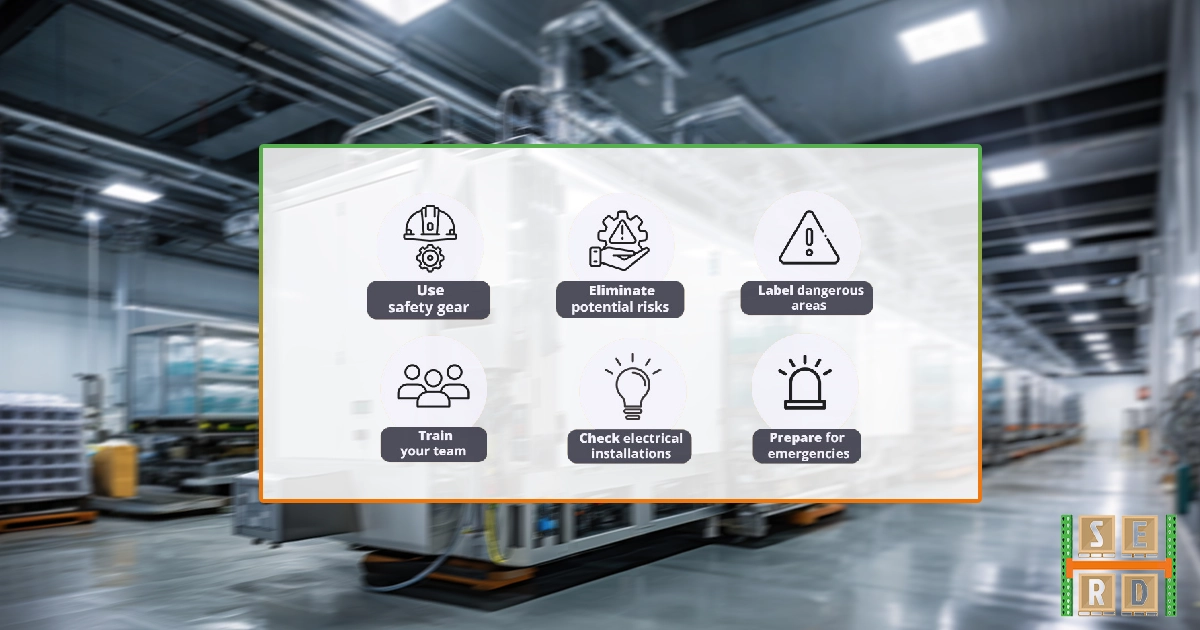


Effective Ways to Boost the Efficiency of Warehouse Coolers and Freezers.
Boosting the efficiency of warehouse store coolers and freezers is essential to reduce energy costs and ensure proper temperature management for stored products. Strategies for warehouse coolers can significantly enhance efficiency by reducing energy consumption, improving product safety, and lowering operational costs. Here are effective strategies to optimize warehouse freezing system performance:
- Upgrade insulation: Ensure that coolers and freezers are properly insulated to minimize temperature fluctuations and energy loss. High-quality insulation helps maintain the desired internal temperature, reducing the workload on refrigeration systems.
- Optimize airflow: Good airflow is critical to preventing hot spots and ensuring even cooling. Arrange products to allow for adequate air circulation, and avoid overpacking shelves to ensure the coolers and freezers run efficiently.
- Regular maintenance: Regularly clean condenser coils, evaporator coils, and fans to ensure optimal functioning. A build-up of dust and debris can reduce the unit’s efficiency. Check door seals and gaskets for wear and replace them when necessary to prevent cold air leakage.
- Implement energy-efficient equipment: Upgrade to energy-efficient refrigeration units with high SEER (Seasonal Energy Efficiency Ratio) ratings. Energy-efficient models use less power while providing the same or better performance. Consider LED lighting, which consumes less energy and generates less heat.
- Monitor and control temperature: Utilize advanced temperature monitoring systems for real-time data and programmable thermostats for energy savings and product preservation, reducing temperature variations and ensuring product quality.
- Use air curtains and strip curtains: Air curtains or strip curtains at entrances can help maintain temperature stability by minimizing cold air loss every time doors are opened.
- Optimize loading and unloading procedures: Organize inventory so that products are stored in zones that make sense for efficient stock rotation and minimize the time doors are open during loading and unloading.
- Invest in Variable-Speed Drives (VSD): VSDs can adjust the speed of the compressor and fans based on the cooling demand, which reduces energy consumption when full power isn’t needed.
- Consider energy recovery systems: Energy recovery systems can repurpose waste heat from refrigeration systems to provide heating for other areas in the warehouse, like office spaces or loading docks, improving energy efficiency.
- Install smart energy management systems: Implement a smart energy management system that can monitor the operation of coolers and freezers, analyzing patterns and optimizing energy usage. This system can also send alerts when maintenance or temperature issues arise.

Safety Measures for Warehouse Cooling and Freezing Systems.
Implementing safety measures for warehouse cooling and freezing systems is critical to ensuring the well-being of workers, maintaining product quality, and avoiding costly accidents or equipment failures. Here are essential safety guidelines for the best freezer pack for coolers:
- Regular maintenance and inspections: Regular maintenance of cooling and freezing systems helps identify and address issues before they become hazards. Inspections should focus on refrigerant lines, electrical wiring, motors, and compressors to ensure safe, efficient operation and prevent malfunctions.
- Refrigerant leak detection: Installing refrigerant leak detection systems helps protect both employees and the environment. Leaks can release harmful gases, so early detection and immediate response prevent accidents and ensure compliance with safety regulations.
- Proper ventilation: Adequate ventilation prevents the buildup of dangerous gases like carbon monoxide and refrigerants. Using air circulation fans and exhaust systems helps maintain air quality and ensures a safe working environment.
- Emergency shutoff systems: Emergency shutoff switches allow quick deactivation of cooling systems in the event of a malfunction or refrigerant leak. These switches should be clearly labeled, easily accessible, and familiar to all employees through proper training.
- Safety training for employees: Comprehensive safety training educates employees on handling equipment, recognizing hazards, and using protective gear. Workers should also know emergency procedures, enhancing their readiness for potential risks in cold environments.
- Ensure proper door and seal functionality: Well-sealed doors prevent cold air leaks, which can compromise temperature control and increase energy consumption. Safety mechanisms on doors protect employees from accidental injuries, such as being trapped or struck.
- Emergency lighting and signage: Emergency lighting ensures visibility during power outages or crises, reducing the risk of accidents. Clear signage highlights potential hazards like extreme cold, electrical dangers, and refrigerant exposure, guiding employees to stay alert and safe.
Not Sure about what you need?
Contact a pro- Recent Posts
- Popular Posts
- Drive-In Pallet Rack Systems for Georgia Warehouses
- Heavy Duty Racks: Durable, High-Capacity Industrial Storage
- Warehouse Racking Solutions in Atlanta, GA That Boost Efficiency and Maximize Space
- Why Professional Warehouse Consultation Is Essential for Scaling Your Business?
- Warehouse Installation and Relocation: A Step-by-Step Guide for a Seamless Transition.
- Warehouse Racking Solutions in Atlanta, GA That Boost Efficiency and Maximize Space
- Drive-In Pallet Rack Systems for Georgia Warehouses
- How Professional Warehouse Consultation Can Maximize Your Storage Potential?
- The Evolution of Teardrop Racks: How They Became the Industry Standard?
- The Unmatched Versatility of Cantilever Racks for Industrial Storage.


